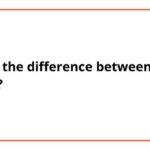Dark, purplish-red burgundy is a colour that symbolises wealth, maturity, and elegance. It is frequently used to produce an elegant and classy environment. Red, on the other hand, is a vibrant and powerful colour that can inspire strong feelings and represents control, dedication, and force.
It is a traditional colour option that has the power to create a powerful statement. The preferred shade of red or burgundy ultimately depends on the desired mood, symbolism, or style. Both colours can be stunning on their own and each has its own special characteristics.
Key Differences Simplified
Burgundy: The colour burgundy is a dark, purplish-red that appears a little darker. It often displays purple or burgundy shades.
Red: In its purest form, red is a strong, primary colour that is bold and intense. It has variants like cherry red or crimson, and it is connected to energy.
Meaning
| Burgundy | Red |
|---|---|
| Burgundy is a colour that is frequently connected to traits like wealth, elegance, and development. It gets its name from the Burgundy wine, which is made in France's Burgundy area and recognised by its dark red colour. Burgundy is a dark, purplish-red with maroon or purple undertones. | Red is a bright and powerful colour that has different emotions depending on the culture and setting. It frequently generates strong feelings and qualities like passion, love, power, and energy. Red can represent life, bravery, and devotion. It has the power to draw focus and make a strong statement. |
| It can express a refined and classy appearance and is frequently used to portray a sense of luxury. Burgundy is frequently utilised in fashion, home design, and other creative sectors to provide depth, warmth, and an element of elegance in addition to its connection with wine. | Additionally, red is frequently connected to major cultural and symbolic meanings like luck, celebration, and warning. Red can stand for a variety of things depending on the situation, but generally speaking, it conveys energy, passion, and significance. |
Usage Examples
- Example 1: “She wore a beautiful burgundy dress to the formal event.”
- Example 2: “She gave her house a bright warm appearance by painting her front door an intense shade of red.”
What makes burgundy different from red?
A particular shade of red called “burgundy” is darker, deeper, and frequently has shades of purple or maroon. Compared to the vibrant and powerful character of pure red, it has a more muted and elegant aspect. While red is known for its aggressiveness, strength and intense hint, burgundy is linked with wealth, elegance, and grace.

Why was burgundy replaced by the red?
Red wasn’t used in place of burgundy. Both colours are still in use and coexist. A particular red shade known as burgundy has unique qualities and meanings. Colour preferences can change over time and in various situations, but this does not mean that one colour is being replaced by another. Red or burgundy might be used depending on the application, desired symbolism, or personal preference.
Check Out Scarlet vs Red
What are the major differences between burgundy and red?
Burgundy and red differ mostly in colour and undertone from one another. The colour burgundy is a dark, purplish-red with maroon or purple undertones. It seems deeper and more calm, and is related to elegance and class.
Red, on the other hand, is a bright, attention-getting main colour that is bright and brilliant. It is linked to strength, determination, and stamina. Red is a lighter tint without the burgundy’s deeper overtones.
Is burgundy a shade of red?
Yes, burgundy is considered a shade of red. It is a deeper and darker variation of the colour red, often with undertones of purple or maroon.

Are there cultural or symbolic meanings associated with burgundy and red?
Both burgundy and red can hold cultural and symbolic meanings. For example, red can be associated with luck, celebration, or love in certain cultures, while burgundy is often linked to luxury, prestige, and power.
- Thus Far vs So Far [Which is Correct?] - September 3, 2023
- Uled vs Oled in 2024 [Which is Better?] - September 3, 2023
- Scarlet vs Red [Difference Explained] - September 3, 2023

![Indigo vs Violet [Rainbow Colours] Indigo vs Violet](https://bitdifference.com/wp-content/uploads/2022/11/ultra-violet-indigo-150x150.webp)
![Scarlet vs Red [Difference Explained] Scarlet vs Red 1](https://bitdifference.com/wp-content/uploads/2023/07/red-vs-scarlet-color_2022-10-10-063103_xkyp-150x150.webp)
![Charcoal vs Black [Helpful Examples] Charcoal vs Black 1](https://bitdifference.com/wp-content/uploads/2023/07/308747-LM-MoireBlack-2-1-1024x393.jpg.optimal-150x150.jpg)
![Indigo vs Blue [Rainbow Colours Explained] Indigo vs Blue 1](https://bitdifference.com/wp-content/uploads/2023/07/Ebikes-2022-08-31T085307.139-1024x683-1-150x150.webp)
![Maroon vs Red [Difference & Examples] Maroon vs Red 1](https://bitdifference.com/wp-content/uploads/2023/07/crimson-red-mp23966-vs-burgundy-maroon-mp42215sp-1-150x150.jpg)
![Lavender vs Violet [Difference & Examples] Lavender vs Violet 1](https://bitdifference.com/wp-content/uploads/2023/07/5-different-shades-of-purple-wedding-color-ideas-150x150.jpg)

